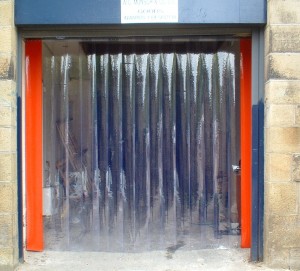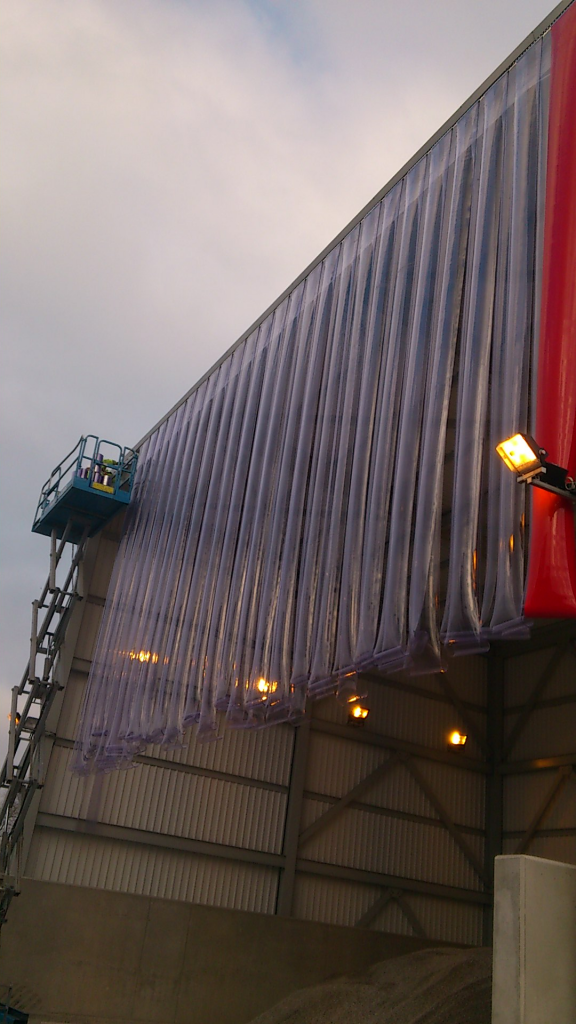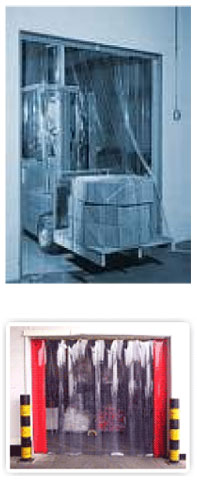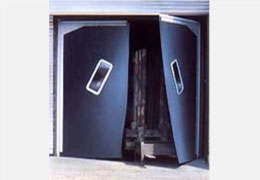Britain and the manufacturing sector
The manufacturing or industrial sector used to be one of Britain’s most lucrative sectors of business, with mining and steelworks contributing a major part of the country’s economy. Britain was one of the first countries to industrialise, so during the 19th Century after the war-effort, the country rose to hold a dominant role in the world’s economy.

This continued right through to the 1980’s when the government decided most of the materials sourced through Britain’s mines and factories were costing too much money to produce, choosing to turn to importing which left hundreds of thousands of people jobless. Although it helped to stop the rising inflation of the late 19th Century, some thirty years later many manufacturing are starting to feel the pinch once more. With the world still trying to recover from a double-dip recession and Britain falling from economic prowess, almost every company in every business sector is looking for ways to save money, the manufacturing sector is no exception.
How can industrial and manufacturing companies save on their expenditure?
There are many ways to save money if your business is in the Manufacturing sector. When the purse strings start to get tighter, most companies will immediately look at staff and advertising budgets to see how these can be minimised in order to save some money and keep their business afloat. Cutting these budgets, while easy to save on the bills, is not always the best solution to the problem. Less advertising means less new customers or clients being made aware of your business. In the industrial and manufacturing sector often a company will work with the same clients for years, so advertising may not be a priority, but a business should always be looking to expand especially seeing as contracts don’t last forever and there is always someone offering to do the same job for less. Cutting staffing is a definite no-no for most companies in the manufacturing sector. Less staff through job cuts means a decreased productivity, longer turnaround or lead times and a huge dent in staff morale. Not exactly what the doctor ordered. There are other solutions to the issue, the main one is simply to save money on ever rising energy costs. The cost of heating a warehouse or factory can be incredibly high, especially for places like food processing plants where very often the ambient temperature varies greatly from area to area.
So how can industrial and manufacturing premises save money on their energy bills?
If you think about any warehouse, storehouse or manufacturing plant you have ever seen, one of the first things you will notice is that they are generally huge, tall buildings made from sheet metal. In fact they are very difficult to insulate and cost a lot more than your average office building does to run. This is for two main reasons. Firstly the cost of lighting a premises of this size is phenomenal. Whether you are using fluorescent tube lighting or any other light source, these are on from the moment the first person arrives until the point the last person leaves. Warehouses, unlike offices, generally run shift work. Some morning and evening shifts so work carries on throughout the day, or some that include the night shift, in which case some lighting will be on 24 hours a day.

One way to reduce costs here is to use energy saving bulbs, which although take a little more time to power up to full brightness, are actually much brighter than your standard light bulb. This means less power needed to run the lights but also less replacement bulbs as energy saving bulbs actually also have a longer lifetime than standard bulbs. The other way of saving money is through insulating the premises, stopping the dispersion of hot and cold air through from one place to another, but also from the unforgiving British weather. Insulating a premises can be expensive, but there are some products on the market that can help to reduce the cost of saving money on your energy bills. One of these products is the industrial curtain.
What are Industrial Curtains?

Also referred to as Warehouse Curtains, Industrial Curtains are a great way of saving money, both through the low cost of production and installation, but also through insulating your premises to save money on your energy bills.
Industrial Curtains are a very popular tool for the manufacturing sector as they are incredibly versatile. Made from long, narrow sheets of PVC plastic, these warehouse curtains are usually used in a door or opening in order to stop heat transfer from one area to the next. As the PVC sheets are relatively heavy and very flexible, they fall together to form a seamless partition. PVC is a very good insulator of heat so when it is placed over an opening, walkway or doorway the partition will actually completely block heat from dispersing.
As the sheets of PVC are flexible they can easily be pushed through by a small vehicle or pedestrian, hence the name PVC curtain. When the object or person has passed through the curtain, the individual PVC strips fall back into place to form the partition wall again. As PVC is completely transparent, the curtain can allow quick and easy access from one area to another while keeping within the guidelines for health and safety.
In what situation might warehouse curtains be more effective than other solutions?

In many manufacturing plant, especially those concerned with food processing and packaging, require different areas of their premises to have different ambient temperatures. For instance if you are storing chilled products in one section and packaging condiments in another, both these areas will need very different temperatures. Despite these temperature requirements, the areas will probably need access between them for small vehicles such as forklift trucks, lollops and trolleys, as well as pedestrian access. Industrial curtains are one way of providing constant access without allowing heat transfer from one place to another. Using a door between the partitions would seem the obvious choice, but this is not without its pitfalls. Firstly choosing a door to separate the two areas means you have the initial outlay of buying an insulated door, which is not going to come cheap. A manual door is much cheaper that an automatic door, but this can dramatically slow down the whole process through having staff manually open the door, which decreases productivity. An automatic door is a great way of traversing from one area to the next, but this means even if it is just a pedestrian walking through the door will open to its maximum capability, thus allowing heat to disperse and making the cooling and heating systems work harder than they have to.
Using an industrial curtain is by far the most effective solution. Because of the insulating properties of PVC, the access way is automatically insulated from heat transfer at a fraction of the price of an insulated door, whether manual or automatic. Due to the way the PVC strips fall together, the partition wall is seamless when not in use. When a vehicle or pedestrian needs to travel through the curtain, the PVC strips push outwards to allow the object or person through, but only leave a very small gap around the sides of the object. This means less heat is dispersed whatever the size of the vehicle or pedestrian passing through. Once the curtain had been pushed through, the PVC strips fall back into place in seconds. This makes PVC warehouse curtains much more efficient than any form of door, through saving both time and energy bills for the business.
Why are Industrial Curtains made from PVC over other plastic compounds?
Warehouse curtains are made from PVC because in reality, there is no other material that has the same combination of properties which make PVC the best material for the job. The main reason PVC is ideal for this environment has to be the fact that it is such a strong and durable material. PVC is renowned for its ability to take a lot of wear and tear, which means even if forklifts are using the doors as industrial crash doors all day, the material is going to last longer than any of the alternatives. This means less maintenance, less replacements for the curtain and a much longer lifespan for the whole product. But durability is not the only reason PVC is the plastic of choice. As mentioned earlier in the article, PVC is a great insulator of heat, which means it can act as an insulating curtain between two areas with different temperatures. PVC is also a great insulator of sound, which makes them ideal for those manufacturing plants that use heave machinery but also need some quiet areas for staff to do office and paper work, or simply to reduce the amount of noise given off by the plant. Noise pollution is not really a major issue in this type of environment, as most businesses that operate heavy machinery are placed within industrial estates, nevertheless Industrial Curtains can still help to contain loud noises from machinery around the rest of the plant. The final reason PVC is more suited to the job is down to the fact it is transparent and maintains a high level of visibility on both sides of the curtain. PVC industrial curtains allow both vehicles and pedestrians to see both sides of the partition, making warehouse curtains conform to the countries rigorous health and safety standards. PVC allows a vehicle operator the opportunity to check for
oncoming traffic before passing through the curtain, which would not be possible with an automatic or manual door.
How are Industrial Curtains different from Industrial Crash Doors?

The difference between Industrial Curtains and Industrial Crash Doors is pretty much exactly as the name suggests. Both of these products are often used in an industrial environment in places where access is required at all times, the main difference being that the Industrial Curtain is made from individual strips of PVC and is hung like a curtain, whereas the Industrial crash door is split in the middle and has sprung hinges on either side of the doorway. Industrial crash doors are made from PVC or rubber depending on their intended use and are more suited to a situation where more larger transportation vehicles use the access way. Just like the doors pubs use in kitchens which swing both ways, but return to the original state after use, industrial crash doors allow quick and easy access while still insulating noise pollution and heat transfer.
These industrial crash doors can be made to suit almost any intended use, from full, clear PVC doors, to blackout doors which prevent light from transferring from one area to the next.
Are Industrial Curtains and Industrial Crash Doors only suited to an industrial environment?
No, industrial curtains and crash doors can be used in many different areas of the manufacturing sector, not just in the industrial size warehouses and production plants. Smaller manufacturers of goods such as woodwork products, metalwork products and glass and plastic products can also make use of these types of partition. A prime example of this type of business using PVC industrial curtains is a woodwork workshop of a carpenter or joiner. In these types of business, very often one workshop is enough space to house each separate piece of the manufacturing process, so the wood is measured and cut in one section, sanded and built in another, painted in another section and so on. If this is all taking place in the one workshop, there is always a danger of cross contamination. In order to stop sawdust and wood chippings from the machinery and tools interfering with the painting and varnishing of finished products, you could separate each area with a PVC industrial curtain. This allows easy access for the cut timber and completed job to be moved from one area to the next, but also means debris from the machines will not spread and contaminate the newly painted jobs. In an environment like this, a workshop could easily be partitioned off into three of four different sections, a PVC curtain would allow this to be done at a fraction of the price of a solid partition wall, but also allow visibility and access across the entire floor space which you would not have with a solid partition.
In a metal workshop PVC industrial curtains have another use which makes them ideal for this kind of situation. Metal workshops often use machines which give off bright and potentially dangerous lights, but also debris and sparks
which need to be contained. Industrial PVC curtains can be tinted to give the right protection from bright lights from tools such as welding torches. Welders are required to wear protective clothing and eyewear, but in a metal workshop not everyone is a welder. If you have an area specifically for doing jobs such as welding, this area could be partitioned off with a couple of tinted industrial curtains. This would allow all those who are not required to wear safety eyewear to move about the remaining workspace freely, but also help to contain the noise and the light in a small segment of the workshop.
Can Industrial Curtains be used in a commercial environment?
Industrial curtains and industrial crash doors are called this because they were initially designed for some of the purposes mentioned earlier in the
article, mainly within an industrial setting. This does not mean they cannot be used outside the manufacturing sector however. Industrial warehouse curtains can be used anywhere from the loading bays of offices right through to the entranceway to the kitchen in a takeaway restaurant. Different sizes of PVC strips means that industrial curtains can be made to suit pretty much any environment where heat insulation is required, noise insulation or even as a preventative for insects, pests and small rodents. As these industrial curtains are so cheap to make, take very little time to install and require very little maintenance they are a popular choice in both industrial and commercial premises. In a commercial setting, particularly in the food service industry, maintenance is going to be higher as the curtain will require washing daily, but in an industrial environment there is pretty much nothing more than the occasional wipe down to keep the curtain functioning as it should. So if you are looking to save some money without having to make cutbacks, whatever your business, industrial curtains can make a big difference to your energy bills and efficiency. For more information of the types of curtains or crash doors available, please feel free to take a look at our website.